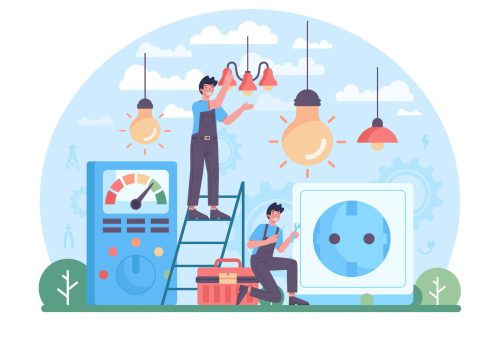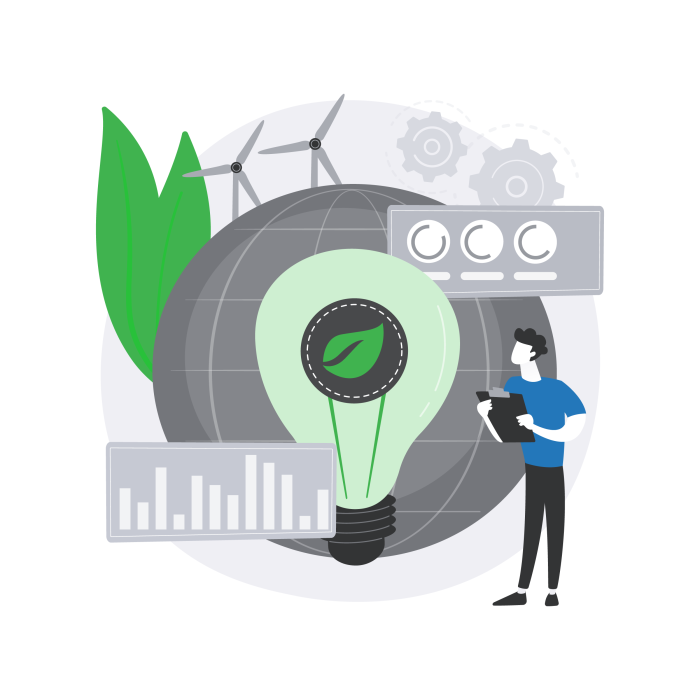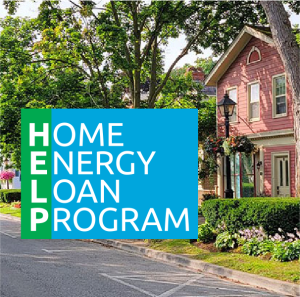In today’s world, understanding what an energy audit is and why it’s so valuable has become essential. Energy efficiency is not just about lowering costs; it also plays a key role in protecting our environment and conserving resources. As global energy demands rise, the need to reduce waste and optimize usage is a shared priority for businesses, households, and institutions alike. This is where an energy audit can make a significant difference.
An energy audit is a comprehensive assessment of energy consumption that identifies areas where usage can be reduced and efficiency improved. It involves analyzing energy use patterns, evaluating equipment, and uncovering both simple and strategic savings opportunities. Ultimately, an energy audit provides a roadmap to achieving more efficient energy use, which leads to reduced costs and a lower environmental impact.
Energy efficiency is at the forefront of sustainability goals worldwide. Rising energy costs, increasing awareness of climate change, and pressure to cut carbon emissions are driving the adoption of energy-saving practices. Conducting an energy audit is a practical, effective first step toward reaching these goals. By conducting an audit, individuals and organizations can make informed decisions that lower their energy footprint, reduce expenses, and contribute to a more sustainable future.
As energy demands continue to grow, optimizing energy usage isn’t just a financial consideration—it’s a shared responsibility for everyone who values a cleaner, more sustainable world.
In this article, we discuss what an energy audit is and why it’s so important.
What is an Energy Audit?
An energy audit systematically evaluates how energy is used within a building or organization to identify opportunities to save energy, reduce costs, and enhance efficiency. What is an energy audit? In simple terms, it’s like a check-up for your energy consumption, pinpointing where energy is being wasted and suggesting ways to improve.
The main purpose of an energy audit is to provide a clear picture of energy use, losses, and potential savings. By assessing how energy flows through lighting, heating, cooling, machinery, and other systems, an audit reveals inefficiencies and offers recommendations for improvement. These insights help you make informed decisions about upgrades, maintenance, and behavioral changes that can lower your overall energy consumption and environmental impact.

The Types of Energy Audits
Now that we understand what an energy audit is, let’s explore the types of energy audits:
Preliminary Audit (Walkthrough Audit)
This quick, high-level assessment focuses on easily identifiable energy-saving opportunities. During a walkthrough audit, an auditor inspects the facility, reviews utility bills, and identifies any obvious areas of energy waste, such as outdated lighting or equipment left on when not used. While less comprehensive, it’s useful for getting an overview of potential improvements with minimal time and cost.
Detailed Audit
A detailed audit goes much deeper, involving a thorough examination of energy use across all systems. This type of audit requires data collection, precise measurements, and detailed analysis to understand energy flows and losses. It provides a comprehensive report with recommendations for both immediate and long-term improvements, along with cost estimates and potential savings. A detailed audit is more costly and time-intensive but is ideal for facilities looking for significant energy optimization.
Both types of audits serve as valuable tools for creating a roadmap toward energy efficiency, making it easier for businesses, institutions, and homeowners to save energy, cut costs, and reduce their carbon footprint.
How Does an Energy Audit Work?
Conducting an energy audit involves several key steps, each designed to provide a comprehensive understanding of energy use, pinpoint inefficiencies, and recommend actionable improvements. Here’s a closer look at each stage:
- Data Collection
The first step is to gather relevant data, such as past energy bills, patterns of energy consumption, and details on the types of equipment and systems in use. This data provides a baseline to understand the current energy usage and identify seasonal or operational trends that may affect consumption. Additionally, collecting information on operational schedules, maintenance records, and other related data can help auditors assess where potential inefficiencies might lie.
- Inspection
In this stage of inspection, the auditor examines major energy-using components like lighting, HVAC, and machinery, and checks insulation levels in areas such as the basement and attic. They also measure doors and windows and take external measurements to assess energy efficiency.The auditor conducts a blower door test to check for air leaks by sealing the front door and using a fan to pull air out, forcing outside air through cracks. Leaks are identified with tools like incense or feathers. Additionally, the auditor may perform a thermographic scan using infrared cameras and other tools to measure energy consumption and identify inefficiencies.
- Analysis
After data collection and inspection, the next step is a detailed analysis of energy use and losses. This involves identifying trends, calculating inefficiencies, and estimating the potential savings that could result from improvements. Advanced tools and software are often used to help auditors create models of energy flows, simulate potential upgrades, and predict cost savings from various changes. This step provides a data-driven foundation for the recommendations that will follow.
- Reporting
In the final stage, the auditor compiles all findings and recommendations into a report. This report usually includes a breakdown of current energy use, identified inefficiencies, and specific recommendations for improvement. The report may categorize recommendations by cost and impact, allowing decision-makers to prioritize changes based on budget and potential savings. It may also include a return-on-investment (ROI) analysis, which helps justify the expense of any suggested upgrades.

Why Is an Energy Audit Important?
So far, we’ve discussed what is energy audit is and the types of energy audits. Now, let’s explore why it is important.
Energy audits play a crucial role in helping businesses, homes, and organizations operate more efficiently and sustainably.
Here are some key reasons why an energy audit is essential:
- Cost Savings
One of the most immediate benefits of an energy audit is the potential for cost savings. By identifying where energy is wasted, audits reveal simple and strategic ways to reduce consumption, which can significantly lower utility bills. Even small adjustments, like upgrading to energy-efficient lighting or optimizing HVAC settings, can result in meaningful savings over time.
- Environmental Impact
Reducing energy consumption helps lower greenhouse gas emissions and other pollutants associated with energy production. For businesses and homeowners committed to environmental sustainability, energy audits are a practical step toward reducing their carbon footprint and contributing to a cleaner, healthier planet. This can also enhance the organization’s image, as customers and clients increasingly value environmentally responsible practices.
- Regulatory Compliance
Many regions have energy regulations that require businesses to meet certain standards of efficiency. Energy audits help ensure compliance with these regulations, avoiding potential fines or penalties. Staying compliant not only mitigates risk but also positions the organization as a responsible and forward-thinking entity.
- Enhanced Equipment Lifespan
Inefficient energy use can put undue stress on equipment, causing it to wear out more quickly and require more frequent repairs or replacements. By identifying and correcting inefficiencies, an energy audit helps extend the life of equipment, reducing maintenance costs and downtime. For facilities with complex machinery or HVAC systems, this can lead to substantial savings over time.
- Informed Decision-Making
An energy audit provides data-driven insights that support smarter decision-making about energy-related upgrades and investments. With a clear understanding of where energy is used and wasted, organizations can prioritize the most impactful changes, focusing on upgrades with the best return on investment. This empowers decision-makers to allocate budgets effectively and achieve meaningful improvements in energy performance.
- Improved Comfort and Productivity
Energy audits often reveal ways to improve indoor air quality, lighting, and temperature control, all of which contribute to a more comfortable environment. For workplaces, this can translate to increased productivity and employee satisfaction, as a well-regulated environment enhances focus and reduces discomfort caused by extreme temperatures or poor lighting.
An energy audit is not only a tool for reducing energy bills but also a comprehensive approach to sustainability, regulatory compliance, and equipment longevity. By uncovering hidden inefficiencies, an audit allows organizations and individuals to take control of their energy use, save money, and make a positive impact on the environment. Whether for a business, home, or institution, an energy audit is an essential step toward a more efficient and sustainable future.
Examples of Success in Energy Savings
Energy audits have proven to deliver substantial energy savings and cost reductions in various real-world and hypothetical scenarios. Here’s a brief look at how energy audits have made a measurable impact:
- School Energy Audit
A local high school conducted a preliminary energy audit to reduce rising utility bills. The audit revealed significant energy waste due to outdated lighting and the lack of occupancy sensors. Implementing low-cost measures, such as upgrading to LED lighting and installing sensors in classrooms, immediately reduced energy costs by 15%. A follow-up detailed audit recommended larger upgrades, like installing solar panels, which helped the school achieve even greater savings over the long term.
- Hotel Chain
A major hotel chain conducted energy audits across its properties to reduce operational costs and support sustainability goals. In each hotel, the audit identified areas for savings, including upgrading lighting to LED, improving insulation, and installing energy-efficient HVAC systems. After implementing these measures, the chain reported a 20% reduction in energy expenses across its properties, enhancing profitability and appealing to eco-conscious guests.

Conducting an energy audit is a valuable investment in both financial savings and environmental stewardship. By assessing current energy usage, identifying inefficiencies, and implementing targeted improvements, individuals and organizations can reduce their energy costs, enhance equipment lifespan, and contribute to a more sustainable future.
An energy audit offers long-term benefits that extend well beyond immediate savings. From reduced operational expenses to improved comfort and regulatory compliance, the advantages of energy efficiency are substantial and lasting. With simple, low-cost changes as well as options for more comprehensive upgrades, an audit can be tailored to any budget or setting, making it accessible and beneficial for homes, businesses, and institutions alike.
Whether you’re looking to cut costs, decrease your carbon footprint, or meet sustainability goals, an energy audit is a practical step in the right direction. Embracing energy efficiency is not only a wise economic choice but also a meaningful way to support a cleaner, greener world.
Book an energy audit today to get started on optimizing your energy use, saving money, and making a positive impact on the environment.
Book Your Energy Audit
Home Energy Audit is the first step to apply for any energy retrofit rebate.
"*" indicates required fields















